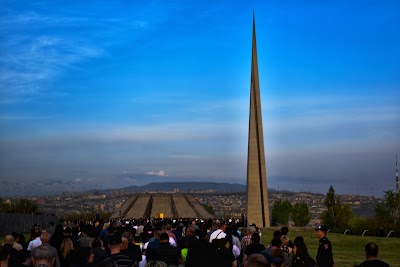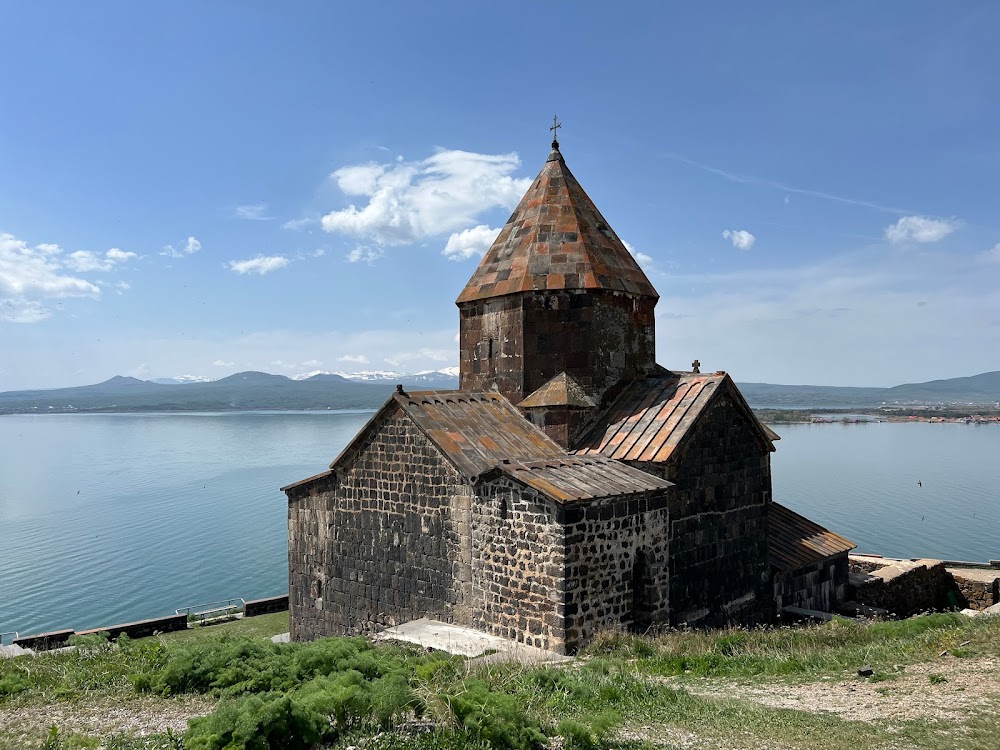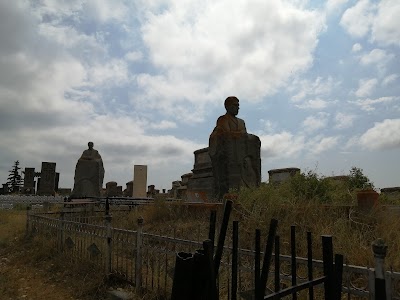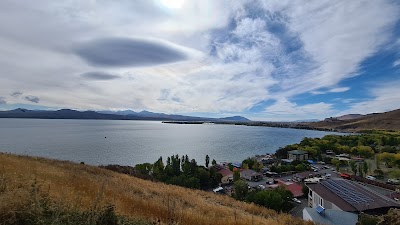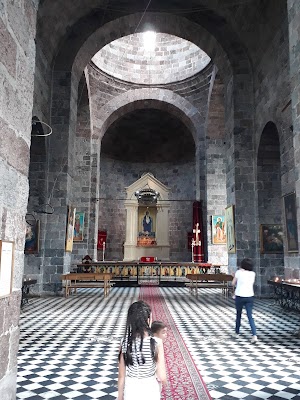Armenian Genocide Memorial in Gavar (Հայոց ցեղասպանության հուշահամալիր Գավառում)
Related Places
Overview
The Armenian Genocide Memorial in Gavar, nestled in the stunning Gegharkunik Province of Armenia, serves as a profound tribute to the memory of the 1.5 million Armenians who lost their lives during the Armenian Genocide from 1915 to 1923. Established in 1970, this poignant monument not only commemorates the victims but also symbolizes the resilience and enduring spirit of the Armenian people.
Set against the backdrop of Gegharkunik's serene landscapes, which border the expansive Lake Sevan, the Memorial features an impressive architectural design characterized by large, enduring stones. These stones evoke the ancient and everlasting presence of the Armenian people. The aesthetic beauty of the memorial complements its somber purpose, inviting visitors to reflect, mourn, and pay their respects in a space that radiates reverence.
The history of this monument is intricately linked to the collective memory of both tragedy and triumph. The Armenian Genocide, perpetrated by the Ottoman Empire in the early 20th century, aimed to eradicate the Armenian population within its territories. This horrific event devastated communities and families, leaving an indelible mark on Armenian identity. The establishment of the Gavar Memorial represents a societal commitment to remember the suffering and sacrifices of ancestors, ensuring that their stories endure.
Beyond its poignant historical significance, the Memorial serves as an educational site offering visitors a profound opportunity to learn about this tragic chapter in human history. Informational plaques and guided tours provide detailed insights into the events of the genocide, the geopolitical context of the time, and its lasting impacts on the Armenian diaspora. The memorial acts as a bridge connecting past and present, underscoring the importance of acknowledging and reconciling with history.
Visitors can enrich their experience with interesting facts about the Gavar Memorial. The site often hosts commemorative events, particularly on April 24th, Armenian Genocide Remembrance Day. During this time, the memorial is adorned with flowers, and candlelight vigils illuminate the night, creating a powerful atmosphere of solidarity and remembrance. Additionally, the Memorial is part of a broader network of genocide monuments throughout Armenia, each contributing to a national narrative of reflection and remembrance.
The memorial's location in Gegharkunik Province adds another layer of charm and appeal. Gavar itself is historically significant and lies near the majestic Lake Sevan, one of the largest freshwater high-altitude lakes in the world. Many visitors choose to combine their pilgrimage to the Memorial with a visit to Sevanavank, an ancient monastic complex that offers breathtaking views of the lake and surrounding mountains. The proximity of these cultural and natural sites makes Gavar a captivating destination for those eager to explore Armenia's rich heritage.
Accessibility to the Armenian Genocide Memorial in Gavar is straightforward for tourists. The town is well-connected by road, and options for car rentals or guided tours from Yerevan, the capital city, are widely available. The drive to Gavar presents scenic vistas of Armenia's diverse landscapes, enriching the journey. Once arrived, the Memorial is easy to find, with clear signage guiding visitors to its tranquil grounds.
Upon visiting the Armenian Genocide Memorial in Gavar, tourists often leave with a deeper understanding of Armenian history and a profound appreciation for the resilience of its people. The memorial’s solemn beauty and historical gravity evoke empathy and contemplation. It serves not only as a site of mourning but also as a powerful testament to human endurance and the ongoing struggle for recognition and justice.
In summary, the Armenian Genocide Memorial in Gavar is a must-visit for foreign tourists interested in history, culture, and human rights. Its hauntingly beautiful architecture, rich historical depth, and scenic setting offer a unique and poignant experience. By visiting this sacred site, you can pay homage to the past, gain insight into the Armenian experience, and participate in a collective act of remembrance that transcends borders and generations.


